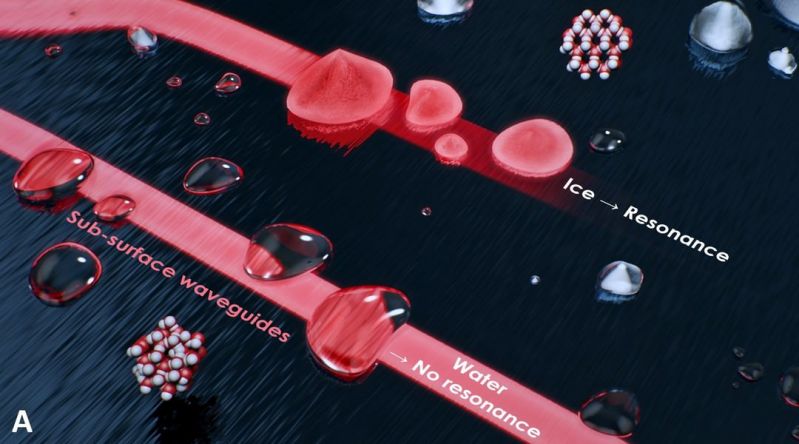Optical Sensor Monitoring Water Phases Under Extreme Conditions
Published on by Water Network Research, Official research team of The Water Network in Academic
A consortium of European and Japanese researchers from both the academic and industry worlds have reported an answer to the multidisciplinary question of how to develop functional sensors that are precise and highly sensitive, and yet withstand harsh environmental conditions.
By Jolke Perelaer

A new type of surface optical sensor for water capable of being embeddA new type of surface optical sensor for water capable of being embedded in aircraft wings with no influence on the aerodynamic design and capable of record high-performance.ed in aircraft wings with no influence on the aerodynamic design and capable of record high-performance. Source: Advanced Science News
State-of-the-art icing sensors may not be sensitive enough for current and future aircraft transport safety regulations.
Moreover, state-of-the-art surface photonic sensors are mostly based on evanescent-field enhanced nanostructures that cannot sustain damage, else they become irreversibly inoperative. These sensors are also extremely difficult to couple with high efficiency to optical fibers and sustain harsh environmental conditions without failure.
The researchers believe that the future of real time sensing lies in photonics and have developed a novel optical sensor technology that can be interconnected to the aircraft optical fiber network and that can be installed on any point of an aircraft for the fast evaluation of icing conditions without affecting its aerodynamic design.
In their recent paper in Advanced Materials Technologies the researchers present results from a full developmental work on the sensor concept proof and prototype first tests in icing chambers. A mid-infrared photonic sensor was developed that is capable of detecting sub-micron and micrometric water ice layers.
Furthermore, the sensor is able to identify the type of water phase (liquid, solid, or metastable supercooled) and instead of working through evanescent-field sensing the sensor uses a tunnelling mechanism, dependent on the resonance frequencies of the water molecule OH-vibrational modes.
Both simulations and experimental proof-of-concept results are shown, as well as data from extensive sensor prototype testing performed at the Fraunhofer-IFAM icing wind-tunnel facilities in Germany.
Read full article: Advanced Science News
Media
Taxonomy
- Quality
- Technology
- Monitors
- Water Quality
- Hydrodynamics & Water Quality
- Water Monitoring
- Water Monitoring
1 Comment
-
Amazing.